#umbellifer
Photo
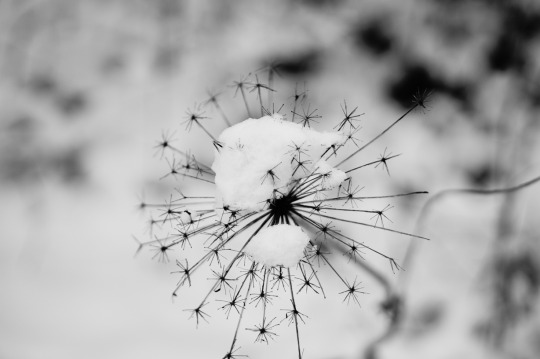

Snow-Cross
98 notes
·
View notes
Text
#1930 - Daucus carota - Wild Carrot

Photo by @purrdence while she was in Aoteoroa, where the wild carrot has been naturalised since at least 1854.
AKA bird's nest, bishop's lace, Bee's Nest-Plant, Devil's Plague and in North America, Queen Anne's Lace.
The direct ancestor of the cultivated carrot, which is regarded as a subspecies. The Binomial comes from the Greek for carrot, and the Latin via other Greek for carrot. The English name comes from the French ‘carotte’, which, surprise surprise, means carrot. It’s possible they all trace back to the Proto-Indo-European ‘ker’ for horn, referring to the large taproot. Daucus carota subsp. sativus translates as “the cultivated carrot carrot”.
The arms of the umbel curl up into a cage after the flowers are pollinated, and the seeds cling to fur and clothing. Curiously, there’s often a single dark pink flower at the center of the disk of white ones. It’s possible this attracts small pollinators (like the Zorion longicorn here) by pretending to be one.
The wild plant can cause contact dermatitis, and some of its very similar-looking relatives like Hemlock are deadly. The domesticated varieties were originally white-rooted and used as a medicinal plant, an aphrodisiac and to prevent poisoning. On the other hand they may have been using parsnips, since they weren’t entirely distinguished in ancient times. A purple-rooted variety existed perhaps as early as the 700s in Afghanistan and was introduced in Europe by Arabs circa 1100. It was cultivated into the modern orange root in the 17th and 18th centuries in the Netherlands. There are frequent claims that the selective breeding was in honour of William of Orange, but by that time there were already orange carrots, which simply did better in the climate of the Netherlands.
Another myth revolves around carrots and eyesight - they’re certainly a good source of Vitamin A or retinol, via carotene pigments (guess where the name comes from) and hence rhodopsin, the retinal pigment, but it was propaganda during the Second World War that claimed it was carrots that gave English pilots such good night vision. They were really concealing the invention of Airborne Interception Radar. It’s not clear whether the Germans actually fell for it, but they did start feeding their own pilots more carrots, and the British also promoted carrots as useful during blackouts in the Blitz.
19 notes
·
View notes
Text

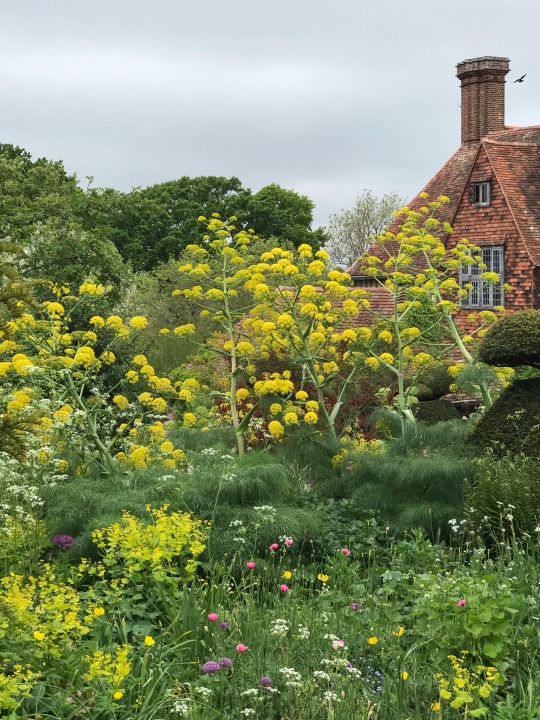


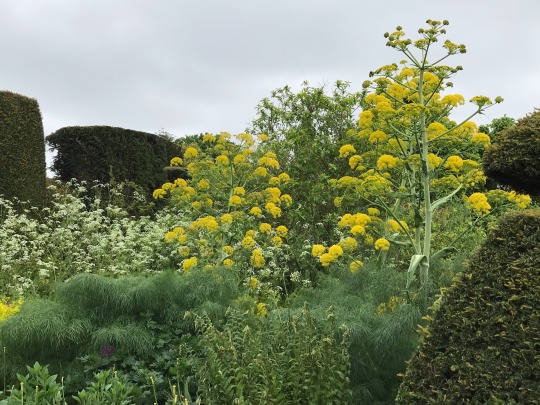
Plant of the Day
Saturday 21 May 2022
Forming a dramatic feature the flowers of Ferula communis (giant fennel) are marching across the garden beds of this part of Great Dixter, Sussex. The giant flowers of this robust perennial are popular with pollinators and rise above mounds of large, finely divided leaves.
Jill Raggett
#Ferula#giantfennel#yellowflowers#herbaceousperennial#herbaceous#herbaceousborder#plants#gardens#writtledesign#horticulture#garden#sussex#greatdixter#umbellifer
132 notes
·
View notes
Text
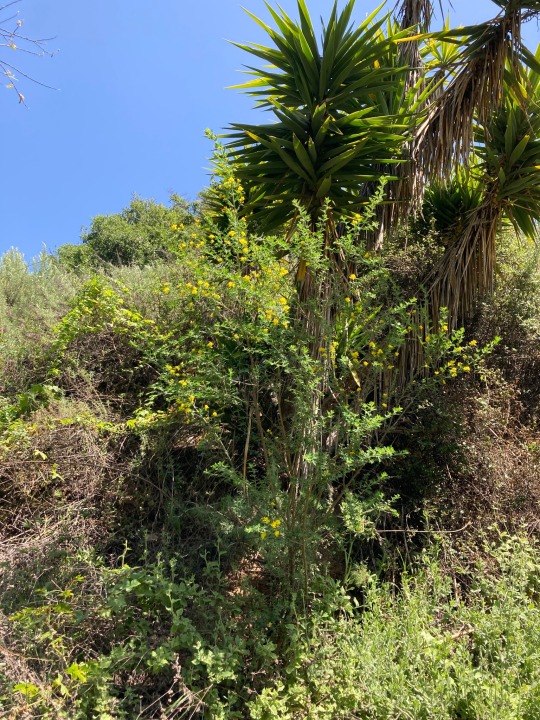


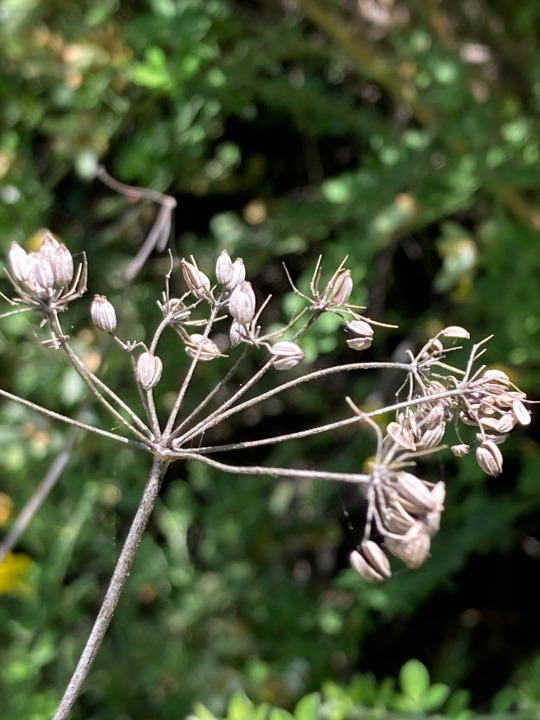
#apioideae#umbellifer#flowering herbs#gone to seed#deerweed#deervetch#acmispon glaber#wildflowers#palm trees#temescal gateway park#pacific palisades
2 notes
·
View notes
Photo

Scientific Name: Torilis arvensis
Common Name(s): Common hedge parsley, spreading hedgeparsley
Family: Apiaceae (carrot, umbellifers)
Life Cycle: Annual
Leaf Retention: N/A
Habit: Forb
USDA L48 Native Status: Introduced
Location: Plano, Texas
Season(s): Spring
#Torilis arvensis#common hedge parsley#spreading hedgeparsley#Apiaceae#annual#forb#introduced#Plano#Texas#spring#flower#white#parsley#umbellifer#Umbelliferae#plantblr
3 notes
·
View notes
Text
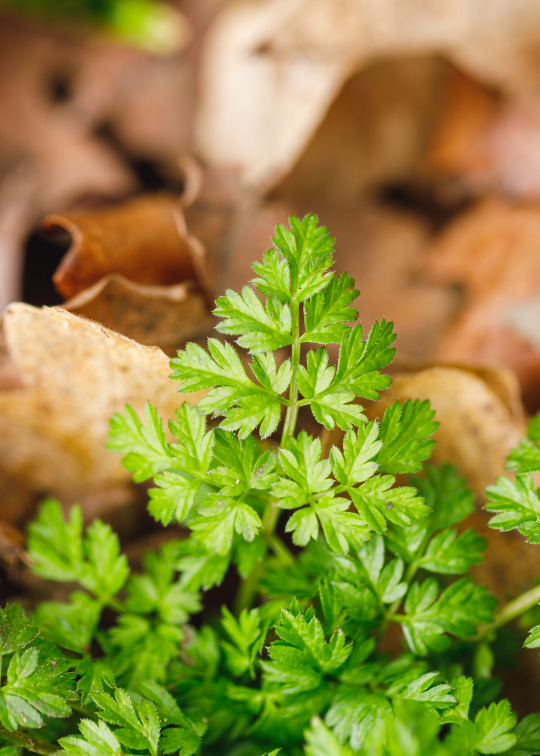
New Leaves
New vibrant green leaves of an umbellifer of some form, growing up through the leaves on the woodland floor, in Short Wood.
#canon#canonuk#flora#leaf#leaves#nature#nature reserve#northamptonshire#northants#outdoors#plant#plants#short and southwick woods#short wood#short wood and southwick wood#umbel#umbellifer#wild carrot#wildlife trust#wildlife trusts#winter#woodland#woods
0 notes
Text

Home Life, June 2022
#Home Life#Garden#Cow Parsley#Wild Parsley#Flowers#Umbellifers#Olympus#OM4Ti#35mm#Kodak#Ektachrome#Slide#Transparency#Film#filmsisnotdead#photographersontumblr
2 notes
·
View notes
Text
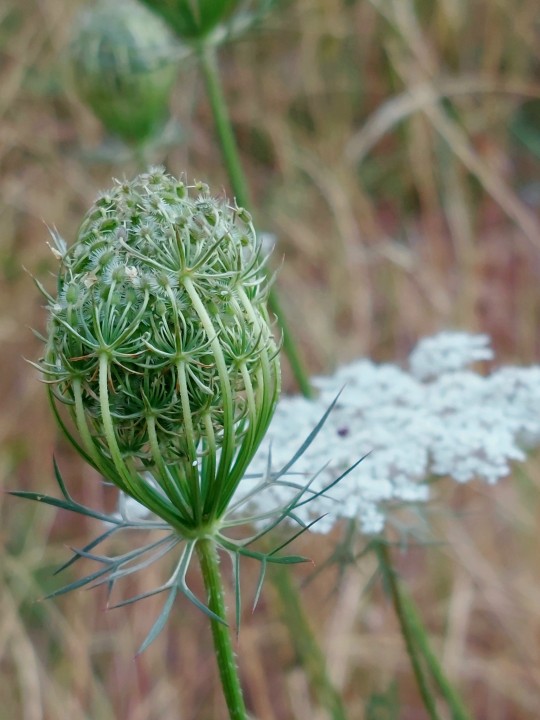
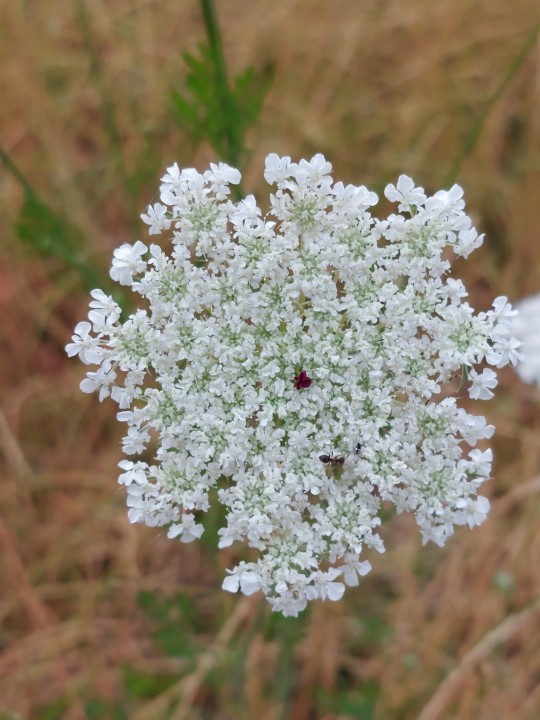
And so the succession continues; cow parsely concedes to hogweed, which browns and bows as wild carrot twists from the hay yellow stems and unfurls: a white frothy inflorescence centred with a small red flower.
#today's walk!#wild carrot#queen anne's lace#umbellifers#too many plants aaa. do I make a sideblog for this all specifically?#maybe but not! this! day!#botany#walks and wanders
4 notes
·
View notes
Text
Really bored at work so here is my brief and slightly unhinged review of a collection common umbellifers found in the British isles:
First up Cow Parsley

It's pretty, delicate and completely benign. You can eat it but apparently it tastes mostly of grass with only the slightest of parsley flavour. I am going to deduct points from it though as there's always so much of it and it causes me a bit of hay fever. 7/10
Wild Carrot

Totally safe, edible, tastes like a carrot, literally is just a carrot. Also has a really pretty umbel with a dark purple or red flower right at the center of it. 9/10
Wild Parsnip

You might be thinking, well I'm sure this one will score highly, surely it's just a parsnip like the wild carrot, it can't be harmful? WELL YOU WOULD BE WRONG! THIS PLANT IS A BASTARD! Yes you can eat the root as that is just a parsnip but the rest of the plant (like giant hogweed) secretes phototoxic sap and can and will burn you with it. I'm giving it a slightly higher score because I like the yellow colour of the flowers and it doesn't grow too big. 3/10
Wild Fennel
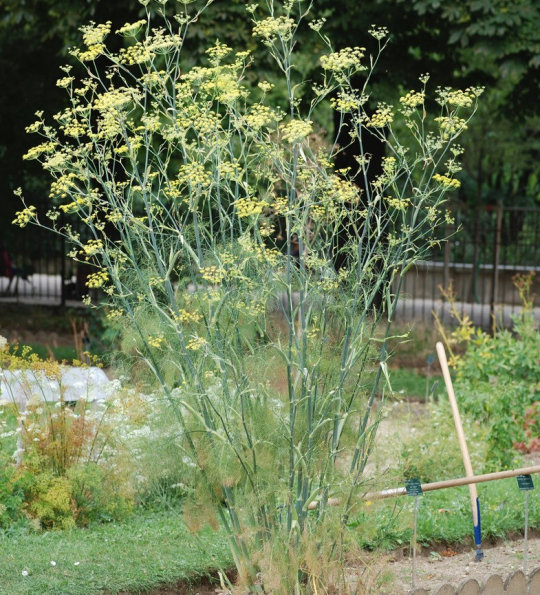
Safe, edible, it's just fennel. I like the colour of the flowers and the shade of green on the stems, it's very aesthetically pleasing to me. However it can get quite big and also I don't really like the flavour of fennel so 6/10.
Poison Hemlock
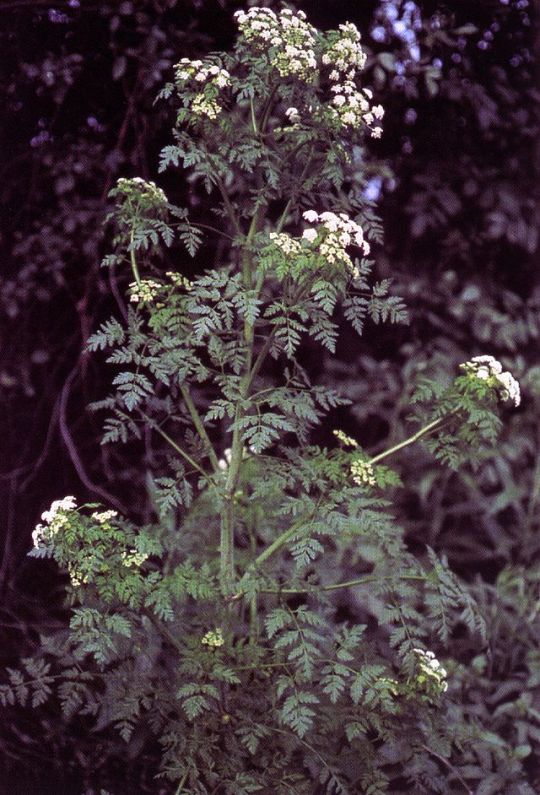
I hate this plant almost as much as I hate giant hogweed, like just look at it, the shape of it all really unnerves me. It is highly toxic and is actually what was used to kill Socrates. It looks a bit like cow parsley when it first grows but it isn't as fuzzy and also smells really bad so you at least know not to eat it. Anyway I hate it. -3/10
Hemlock Water Dropwort
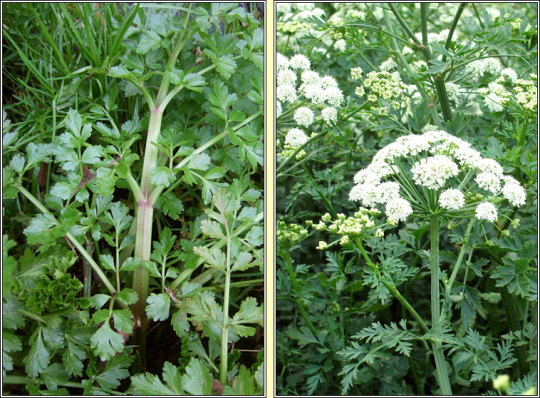
The most poisonous plant on the British isles. It's very much a bastard as it has a very similar appearance to celery or parsley and people have eaten it as they mistook it for either one. It also has quite a nice scent, especially compared to poison Hemlock, which is another way it tricks people into consuming it. ALSO it grows EVERYWHERE like any water way in the UK probably has this plant growing near it, and it's quite big and freaky when it's in flower. -10/10
Common Hogweed
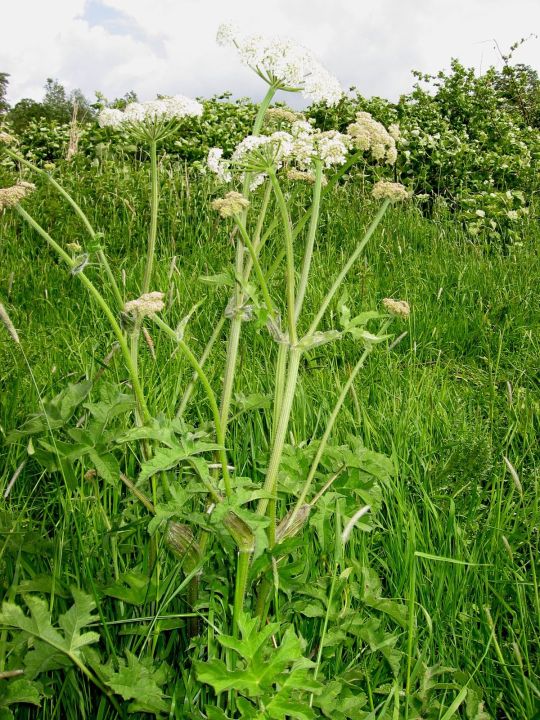
I don't really know how to feel about common hogweed. On the one hand it's appearance reminds me a lot of it's larger cousin, it also contains phototoxic sap (although it is far less concentrated than in giant hogweed, and you need to actually break the plant to get the sap on you) but on the other hand it is such a common plant and is mostly harmless, also foragers swear that it is the tastiest plant to forage, and I am intrigued by this, I dunno I guess I'm giving it 3/10.
Giant Hogweed
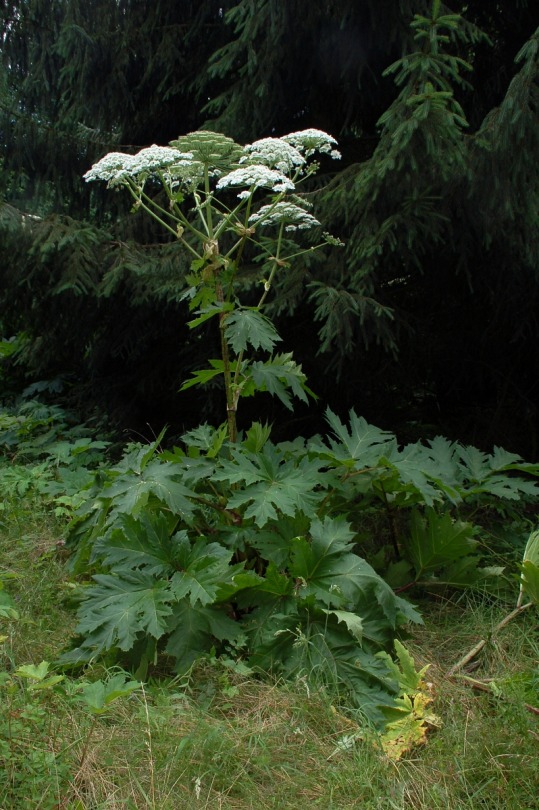
FUCK YOU FUCK YOU FUCK YOU FUCK YOU FUCK YOU FUCK YOU FUCK YOU FUCK YOU! I mean if you follow this blog you already know how I feel about this plant. This plant is the biggest bastard of them all. Why does it need to be that big? That scary? Why is it dripping with sap that will burn your skin off? Also this is the only plant on the list that is not native to the UK and no matter how I feel about the others at least they all have a place in the eco system. BUT THIS BASTARD!? Not only is it harmful to humans and animals it's also harmful to the environment, out competing native plants and destroying river banks, it truly is the worse, god I hate it so much. Anyway going to stop here cos I could keep ranting but I think I've made my point clear. -100/10 FUCK YOU!
#giant hogweed#i fucking hate giant hogweed#plants#botany#british isles#rant#the rambles of a mad person#umbellifers
0 notes
Text
Plarch Plantness
Example members
Solanaceae:
Tomato
Potato
Pepper
Eggplant

Apieaceae:
Carrot
Parsley
Cumin
Dill
Asafoetida
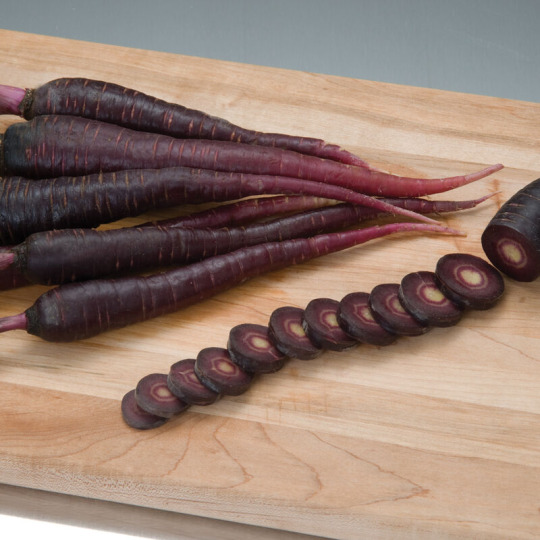
16 notes
·
View notes
Text
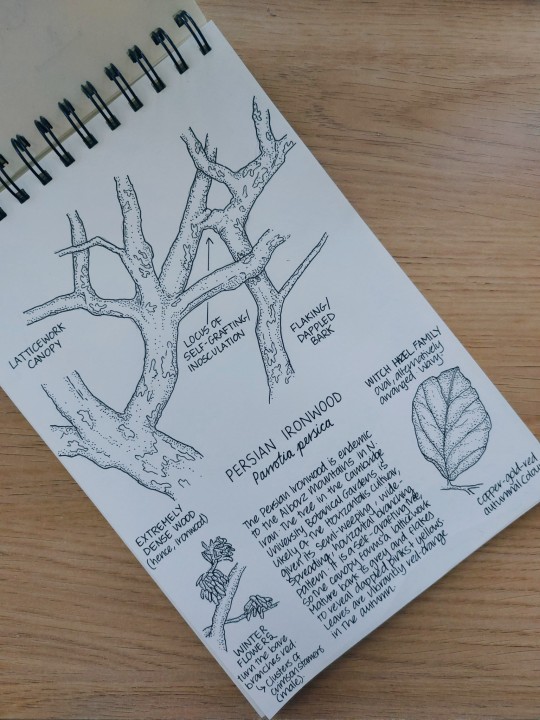
Sketches of a Persian Ironwood, and Spring in Cambridge
Spring has sprung in Cambridge, and so I'm once again venturing out into the gardens and fields that surround me, equipped (as ever) with iNaturalist, my handy identification app. It is the season for Common Brimstone, an uncommonly pretty butterfly that is lime green, but looks neon yellow as it catches the sun – I had not thought the name appropriate until I saw a few of them flitting outside my window at midday, brighter than anything else in the sky.
Cambridge, though not far removed from Hertfordshire in distance, sports an entirely different blanket of spring flowers; snowdrops and winter aconite as the cold first breaks, then daffodils and crocuses and squills forming blue carpets ringing old trees, and now as spring settles in, and the days grow longer and hotter, anemones and starflowers dot the grasses and dance as they catch the breeze. It is a floral scene against the twiggy umbellifers of Hertfordshire, younger fields to older woodland; no bluebells, nor cow parsely, nor forget-me-nots that occur in nettled margins besides the paths; only flowers, and ivy with its smooth, shiny leaves.
I'm going to see my favourite tree today in the botanical gardens - it is a Persian Ironwood, which I first came across in a tour of the gardens with my PhD cohort. This ironwood is a sprawling tree with a densely woven canopy, a latticework of forking, looping branches that is disorientating to follow with the eyes, for the tree is a self-grafting one; separate branches will meet and rejoin, from the same tree and from different trees (at which point they are called 'gemels', as in gemini ‐ paired or twinned trees). A quick sketch before I leave - and a post to break the months long silence I have held on here!
13 notes
·
View notes
Text
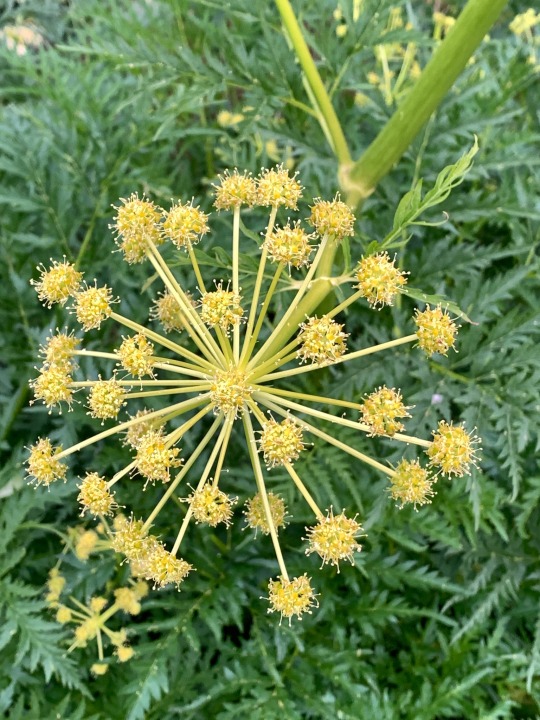
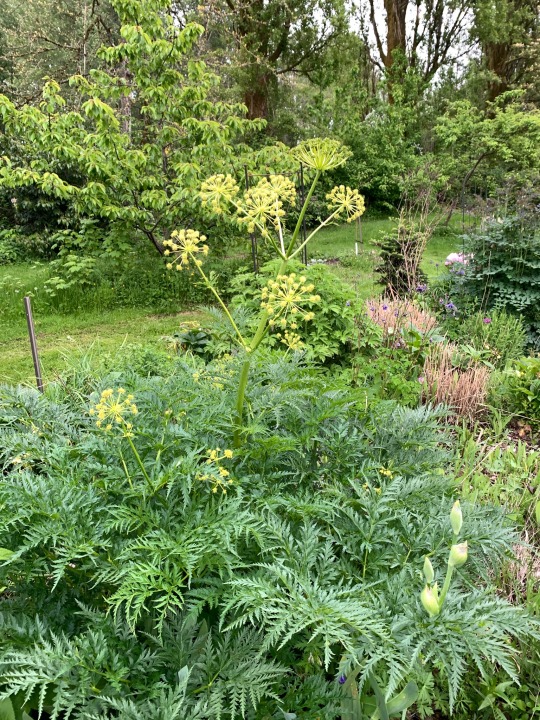
A large umbellifer that I can't find the name of but it comes back every year and gets a little bigger every time.
51 notes
·
View notes
Text
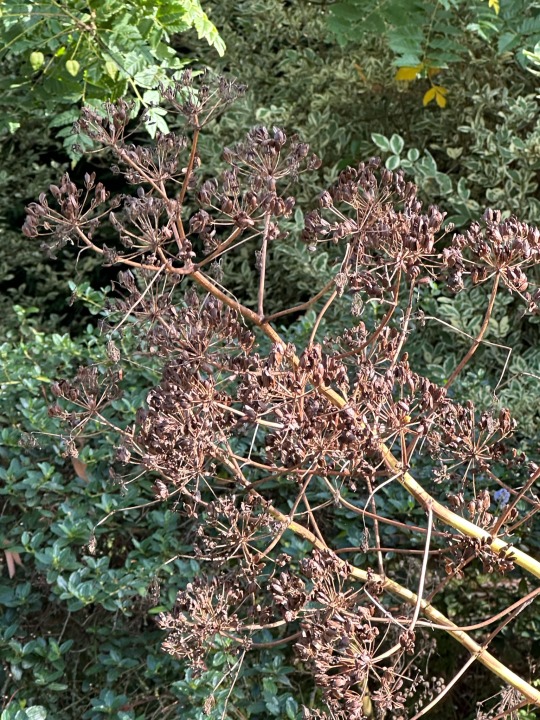
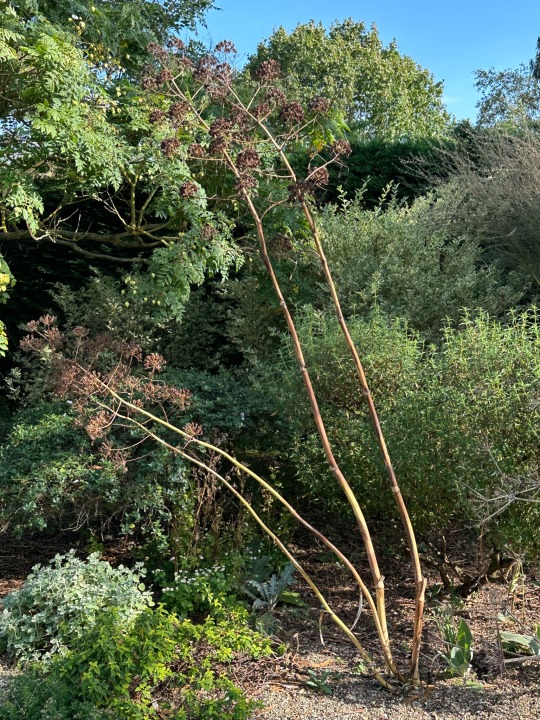
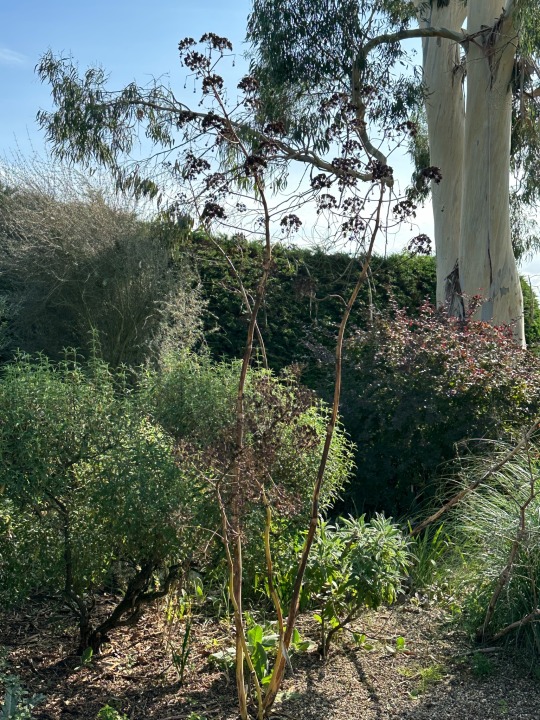
Plant of the Day
Saturday 4 November 2023
The dramatic seedheads of Ferula communis (giant fennel) continue to provide autumn and winter interest. This clump forming perennial creates a large mound of dark-green, finely-cut, unscented foliage from which rises a large flower stalk topped with yellow umbellifer flowers.
Jill Raggett
#Ferula#giant fennel#herbaceous#perennial#plants#horticulture#seed head#gardens#garden#essex#herbaceousperennial#gravel garden#dry garden#Beth Chatto Garden
58 notes
·
View notes
Text

3 notes
·
View notes
Photo

Scientific Name: Cicuta maculata
Common Name(s): Water hemlock
Family: Apiaceae (carrot; umbellifers)
Life Cycle: Biennial, perennial
Leaf Retention: Deciduous if perennial
Habit: Forb
USDA L48 Native Status: Native
Location: Plano, Texas
Season(s): Spring
Looks like wild carrot, but it’s the most toxic plant in North America.
#Cicuta maculata#water hemlock#Apiaceae#biennial#perennial#deciduous#forb#native#Plano#Texas#spring#flower#white#poisonous plants#toxic plants#hemlock#umbellifer#Umbelliferae#plantblr
2 notes
·
View notes
Video
Umbellifer Longhorn by Oliver Andrews
Via Flickr:
An umbellifer longhorn beetle on a plant stem in Short Wood.
#beetle#beetles#canon#canonuk#insect#insects#invertebrate#invertebrates#minibeast#minibeasts#nature#nature reserve#northamptonshire#northants#outdoors#phytoecia cylindrica#short wood#short wood and southwick wood#umbellifer longhorn beetle#wildlife#wildlife trust#wildlife trusts#woodland#Peterborough#England#United Kingdom#flickr
0 notes
